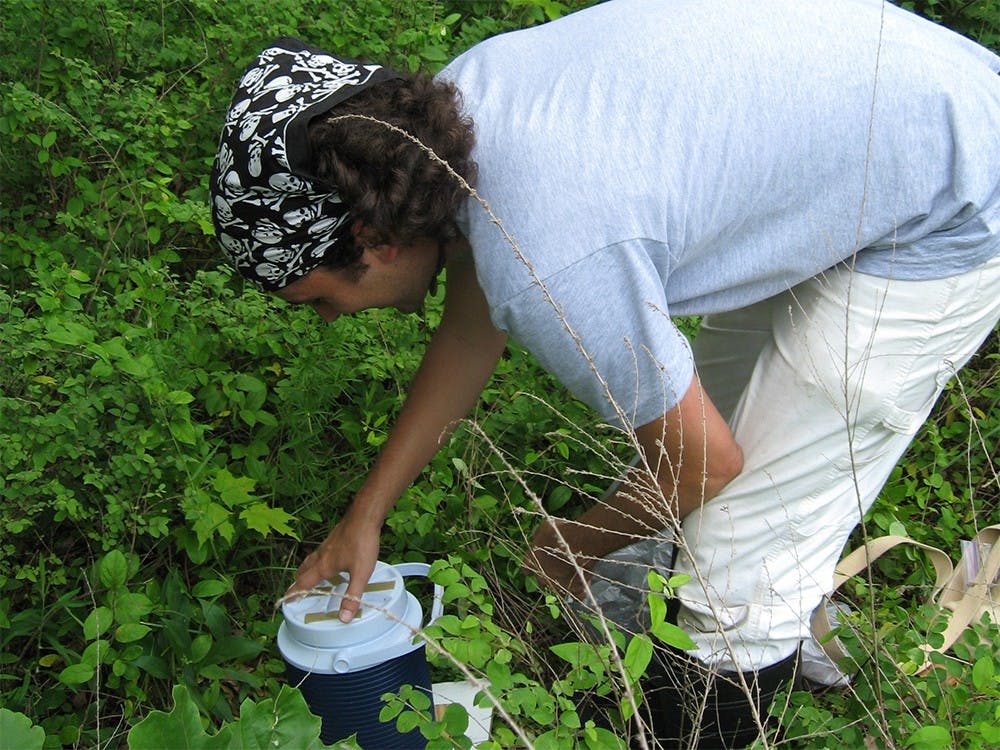Keith Clay, a professor in the Department of Biology, and his lab have found few pathogens in ticks in southern Indiana that cause common tick-borne illnesses, while there are signs of new tick species and possibly new pathogens just a few hours north.
“Just in the past 10 years, we’re seeing things shift considerably,” Clay said in the release. “You used to never see lone star ticks in Indiana; now they’re very common. In 10 years, we’re likely to see the Gulf Coast tick here, too. There are several theories for why this is happening, but the big one is climate change.”
The exact reason for the shifted borders for the species is unclear, though changing temperatures do play a role, according to the release.
Another factor that could influence the shift is changes in animal populations, including deer.
Understanding tick migration and boundaries is important for containing infectious diseases.
Ticks are responsible for the spread of Rocky Mountain spotted fever, southern tick-associated rash illness, Tularemia and Heartland virus along with Lyme disease, according to the Center for Disease Control.
“Ticks play the same role in temperate climates that mosquitoes play in the tropics,” Clay said in the release. “Fortunately for us, ticks can’t fly...although, they can catch a ride on birds.”
To capture the ticks, Clay and his team relied on three methods: tick drags, small mammal catch and release, and carbon dioxide ?trapping.
Tick dragging involves dragging a large, white sheet of fabric along the ground to catch the ticks. They were also able to find ticks on small animals before tagging and releasing them and by placing dry ice near where ticks are most common, as ticks are drawn to the CO2 in ?the ice.
Evelyn Rynkiewicz, a former doctoral student in Clay’s lab and a current postdoctoral research fellow at the University of Edinburgh, published a paper in the May issue of “Molecular Ecology” that catalogued the microbiome of two Indiana tick species and of the blood of white-footed mice.
Through this research, Rynkiewicz was able to identify all the major pathogens residing in the ticks’ bodies.
The closeness of harmful pathogens and harmless symbionts in a tick’s system leaves room for the potential to create new dangers for humans, according to the release.
“Understanding the tick’s microbiome is really laying the foundation for future research,” Rynkiewicz said in the release. “There are groups working right now on introducing symbionts into mosquitoes’ microbiome to block or reduce the number of pathogens in their systems that affect humans. One day we may be able to do the same with ticks.”
The current diagnostics for tick-borne illnesses are lacking, Clay said, and diagnostic errors are responsible for most diagnoses of Lyme disease in southern Indiana, despite the fact that he and his lab found no evidence of the bacterial species responsible for the disease in the ticks captured in ?their studies.
“The medical field doesn’t really have a great handle on tick-borne diseases in some ways because the diagnostic tests aren’t very accurate,” he said in the release. “The lone star tick, for example, carries a pathogen that’s closely related to Lyme disease. It’s not Lyme disease, but there’s a good chance our current tests will turn up positive for it.”
April and May are some of the worst months for dog ticks and lone star ticks, so researchers recommend tucking pant legs into socks, wearing light-colored clothing and using bug sprays if out and about in the woods, according to the release.
Hikers can avoid tick exposure by not wading unprotected into areas where ticks are common and sticking to trails where grass and other vegetation are not present.
If a tick is found, it is important to remove it immediately, Clay said, in order to avoid potential tick-borne illnesses.
He stressed the importance of checking closely for the arachnids on the backs of legs and other areas that are difficult to see.
Rynkiewicz echoed that sentiment.
“Fortunately, it takes a while for ticks to transmit pathogens,” Rynkiewicz said in the release. “They stay attached a few days, but if you get them off right away, your chances of picking something up are very low.”
Holly Hays






